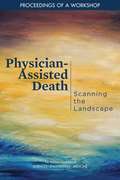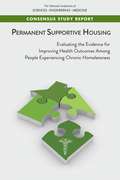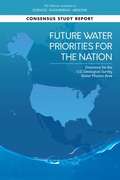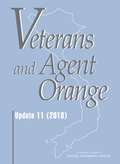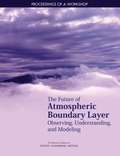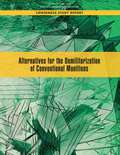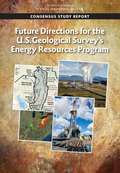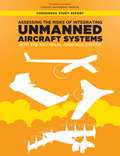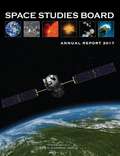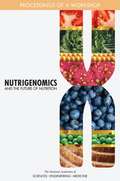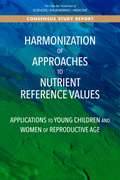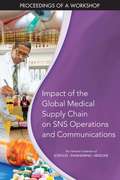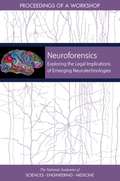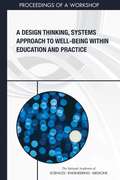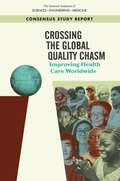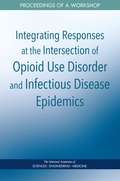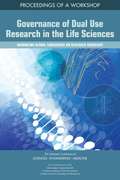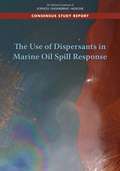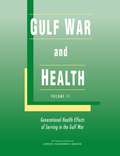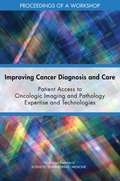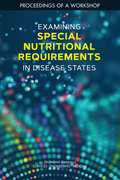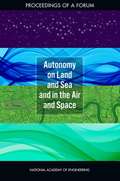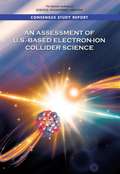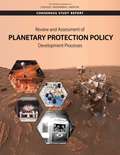- Table View
- List View
Physician-Assisted Death: Scanning The Landscape: Proceedings Of A Workshop
by National Academies of Sciences Engineering MedicineThe question of whether and under what circumstances terminally ill patients should be able to access life-ending medications with the aid of a physician is receiving increasing attention as a matter of public opinion and of public policy. Ethicists, clinicians, patients, and their families debate whether physician-assisted death ought to be a legal option for patients. While public opinion is divided and public policy debates include moral, ethical, and policy considerations, a demand for physician-assisted death persists among some patients, and the inconsistent legal terrain leaves a number of questions and challenges for health care providers to navigate when presented with patients considering or requesting physician-assisted death. To discuss what is known and not known empirically about the practice of physician-assisted death, the National Academies of Sciences, Engineering, and Medicine convened a 2-day workshop in Washington, DC, on February 12–13, 2018. This publication summarizes the presentations and discussions from the workshop.
Permanent Supportive Housing: Evaluating The Evidence For Improving Health Outcomes Among People Experiencing Chronic Homelessness
by National Academies of Sciences Engineering MedicineChronic homelessness is a highly complex social problem of national importance. The problem has elicited a variety of societal and public policy responses over the years, concomitant with fluctuations in the economy and changes in the demographics of and attitudes toward poor and disenfranchised citizens. In recent decades, federal agencies, nonprofit organizations, and the philanthropic community have worked hard to develop and implement programs to solve the challenges of homelessness, and progress has been made. However, much more remains to be done. Importantly, the results of various efforts, and especially the efforts to reduce homelessness among veterans in recent years, have shown that the problem of homelessness can be successfully addressed. Although a number of programs have been developed to meet the needs of persons experiencing homelessness, this report focuses on one particular type of intervention: permanent supportive housing (PSH). Permanent Supportive Housing focuses on the impact of PSH on health care outcomes and its cost-effectiveness. The report also addresses policy and program barriers that affect the ability to bring the PSH and other housing models to scale to address housing and health care needs.
Future Water Priorities for the Nation: Directions For The U. S. Geological Survey Water Mission Area
by National Academies of Sciences Engineering MedicineSolving problems related to use of water resources will be of paramount importance in coming decades as increasing pressure from growing populations, climate change, extreme weather, and aging water-related infrastructure threaten water availability and quality. The Water Mission Area (WMA) of the U.S. Geological Survey (USGS) has a long-established reputation for collecting and delivering high-quality, unbiased scientific information related to the nation’s water resources. WMA observations help inform decisions ranging from rapid responses during emergencies such as hurricanes, floods, and forest fires, to the long-term management of water resources. Produced at the request of USGS, this report identifies the nation’s highest-priority water science and resources challenges over the next 25 years. Future Water Priorities for the Nation summarizes WMA’s current water science and research portfolio, and recommends strategic opportunities for WMA to more effectively address the most pressing challenges.
Veterans and Agent Orange (2018): Update 11 (2018)
by Engineering Medicine National Academies of SciencesFrom 1962 to 1971, the U.S. military sprayed herbicides over Vietnam to strip the thick jungle canopy that could conceal opposition forces, to destroy crops that those forces might depend on, and to clear tall grasses and bushes from the perimeters of US base camps and outlying fire-support bases. Mixtures of 2,4-dichlorophenoxyacetic acid (2,4-D), 2,4,5-trichlorophenoxyacetic acid (2,4,5-T), picloram, and cacodylic acid made up the bulk of the herbicides sprayed. The main chemical mixture sprayed was Agent Orange, a 50:50 mixture of 2,4-D and 2,4,5-T. At the time of the spraying, 2,3,7,8-tetrachlorodibenzo-p-dioxin (TCDD), the most toxic form of dioxin, was an unintended contaminant generated during the production of 2,4,5-T and so was present in Agent Orange and some other formulations sprayed in Vietnam. Because of complaints from returning Vietnam veterans about their own health and that of their children combined with emerging toxicologic evidence of adverse effects of phenoxy herbicides and TCDD, the National Academies of Sciences, Engineering, and Medicine was asked to perform a comprehensive evaluation of scientific and medical information regarding the health effects of exposure to Agent Orange, other herbicides used in Vietnam, and the various components of those herbicides, including TCDD. Updated evaluations were conducted every two years to review newly available literature and draw conclusions from the overall evidence. Veterans and Agent Orange: Update 11 (2018) examines peer-reviewed scientific reports concerning associations between various health outcomes and exposure to TCDD and other chemicals in the herbicides used in Vietnam that were published between September 30, 2014, and December 31, 2017, and integrates this information with the previously established evidence database.
The Future of Atmospheric Boundary Layer Observing, Understanding, and Modeling: Proceedings Of A Workshop
by National Academies of Sciences Engineering MedicineImproved observations of the atmospheric boundary layer (BL) and its interactions with the ocean, land, and ice surfaces have great potential to advance science on a number of fronts, from improving forecasts of severe storms and air quality to constraining estimates of trace gas emissions and transport. Understanding the BL is a crucial component of model advancements, and increased societal demands for extended weather impact forecasts (from hours to months and beyond) highlight the need to advance Earth system modeling and prediction. New observing technologies and approaches (including in situ and ground-based, airborne, and satellite remote sensing) have the potential to radically increase the density of observations and allow new types of variables to be measured within the BL, which will have broad scientific and societal benefits. In October 2017, the National Academies of Sciences, Engineering, and Medicine convened a workshop to explore the future of BL observations and their role in improving modeling and forecasting capabilities. Workshop participants discussed the science and applications drivers for BL observation, emerging technology to improve observation capabilities, and strategies for the future. This publication summarizes presentations and discussions from the workshop.
Call to Action for Science Education: Building Opportunity For The Future
by National Academies of Sciences, Engineering, and Medicine Division of Behavioral and Social Sciences and Education Board on Science Education Committee on the Call to Action for Science EducationScientific thinking and understanding are essential for all people navigating the world, not just for scientists and other science, technology, engineering and mathematics (STEM) professionals. Knowledge of science and the practice of scientific thinking are essential components of a fully functioning democracy. Science is also crucial for the future STEM workforce and the pursuit of living wage jobs. Yet, science education is not the national priority it needs to be, and states and local communities are not yet delivering high quality, rigorous learning experiences in equal measure to all students from elementary school through higher education. Call to Action for Science Education: Building Opportunity for the Future articulates a vision for high quality science education, describes the gaps in opportunity that currently exist for many students, and outlines key priorities that need to be addressed in order to advance better, more equitable science education across grades K-16. This report makes recommendations for state and federal policy makers on ways to support equitable, productive pathways for all students to thrive and have opportunities to pursue careers that build on scientific skills and concepts. Call to Action for Science Education challenges the policy-making community at state and federal levels to acknowledge the importance of science, make science education a core national priority, and empower and give local communities the resources they must have to deliver a better, more equitable science education.
Alternatives for the Demilitarization of Conventional Munitions
by National Academies of Sciences Engineering MedicineThe U.S. military has a stockpile of approximately 400,000 tons of excess, obsolete, or unserviceable munitions. About 60,000 tons are added to the stockpile each year. Munitions include projectiles, bombs, rockets, landmines, and missiles. Open burning/open detonation (OB/OD) of these munitions has been a common disposal practice for decades, although it has decreased significantly since 2011. OB/OD is relatively quick, procedurally straightforward, and inexpensive. However, the downside of OB and OD is that they release contaminants from the operation directly into the environment. Over time, a number of technology alternatives to OB/OD have become available and more are in research and development. Alternative technologies generally involve some type of contained destruction of the energetic materials, including contained burning or contained detonation as well as contained methods that forego combustion or detonation. Alternatives for the Demilitarization of Conventional Munitions reviews the current conventional munitions demilitarization stockpile and analyzes existing and emerging disposal, treatment, and reuse technologies. This report identifies and evaluates any barriers to full-scale deployment of alternatives to OB/OD or non-closed loop incineration/combustion, and provides recommendations to overcome such barriers.
Future Directions for the U.S. Geological Survey’s Energy Resources Program
by National Academies of Sciences Engineering MedicineReliable, affordable, and technically recoverable energy is central to the nation's economic and social vitality. The United States is both a major consumer of geologically based energy resources from around the world and - increasingly of late - a developer of its own energy resources. Understanding the national and global availability of those resources as well as the environmental impacts of their development is essential for strategic decision making related to the nation's energy mix. The U.S. Geological Survey Energy Resources Program is charged with providing unbiased and publicly available national- and regional-scale assessments of the location, quantity, and quality of geologically based energy resources and with undertaking research related to their development. At the request of the Energy Resources Program (ERP), this publication considers the nation's geologically based energy resource challenges in the context of current national and international energy outlooks. Future Directions for the U.S. Geological Survey’s Energy Resources Program examines how ERP activities and products address those challenges and align with the needs federal and nonfederal consumers of ERP products. This study contains recommendations to develop ERP products over the next 10-15 years that will most effectively inform both USGS energy research priorities and the energy needs and priorities of the U.S. government.
Assessing the Risks of Integrating Unmanned Aircraft Systems (UAS) into the National Airspace System
by National Academies of Sciences Engineering MedicineWhen discussing the risk of introducing drones into the National Airspace System, it is necessary to consider the increase in risk to people in manned aircraft and on the ground as well as the various ways in which this new technology may reduce risk and save lives, sometimes in ways that cannot readily be accounted for with current safety assessment processes. This report examines the various ways that risk can be defined and applied to integrating these Unmanned Aircraft Systems (UAS) into the National Airspace System managed by the Federal Aviation Administration (FAA). It also identifies needs for additional research and developmental opportunities in this field.
Space Studies Board Annual Report 2017
by National Academies of Sciences Engineering MedicineThe original charter of the Space Science Board was established in June 1958, three months before the National Aeronautics and Space Administration (NASA) opened its doors. The Space Science Board and its successor, the Space Studies Board (SSB), have provided expert external and independent scientific and programmatic advice to NASA on a continuous basis from NASA’s inception until the present. The SSB has also provided such advice to other executive branch agencies, including the National Oceanic and Atmospheric Administration (NOAA), the National Science Foundation (NSF), the U.S. Geological Survey (USGS), the Department of Defense, as well as to Congress. Space Studies Board Annual Report 2017 covers a message from the chair of the SSB, David N. Spergel. This report also explains the origins of the Space Science Board, how the Space Studies Board functions today, the SSB’s collaboration with other National Academies of Sciences, Engineering, and Medicine units, assures the quality of the SSB reports, acknowledges the audience and sponsors, and expresses the necessity to enhance the outreach and improve dissemination of SSB reports. This report will be relevant to a full range of government audiences in civilian space research - including NASA, NSF, NOAA, USGS, and the Department of Energy, as well members of the SSB, policy makers, and researchers.
Nutrigenomics and the Future of Nutrition: Proceedings Of A Workshop
by National Academies of Sciences Engineering MedicineOn December 5, 2017, the National Academies of Sciences, Engineering, and Medicine hosted a public workshop titled Nutrigenomics and the Future of Nutrition in Washington, DC, to review current knowledge in the field of nutrigenomics as it relates to nutrition. Workshop participants explored the influence of genetic and epigenetic expression on nutritional status and the potential impact of personalized nutrition on health maintenance and chronic disease prevention. This publication summarizes the presentations and discussions from the workshop.
Harmonization of Approaches to Nutrient Reference Values: Applications To Young Children And Women Of Reproductive Age
by National Academies of Sciences Engineering MedicineRecommended intake levels for nutrients and other dietary components were designed initially to prevent nutrient deficiency diseases in a given population, and the original methodological approach used to derive intake values did not include consideration for other applications. However, with the increasing globalization of information and the identification of a variety of factors specific to different population subgroups (e.g., young children and women of reproductive age) that influence their nutritional needs, there has been increasing recognition of the need to consider methodological approaches to deriving nutrient reference values (NRVs) that are applicable across countries and that take into account the varying needs of different population subgroups. There is a need for guidance and recommendations about methodological approaches, as well as their potential for application to an international process for the development of NRVs, and particularly for young children and women of reproductive age. Harmonization of Approaches to Nutrient Reference Values: Applications to Young Children and Women of Reproductive Age examines these issues and makes recommendations for a unified approach to developing NRVs that would be acceptable globally.
Impact of the Global Medical Supply Chain on SNS Operations and Communications: Proceedings Of A Workshop
by National Academies of Sciences Engineering MedicineThe Centers for Disease Control and Prevention (CDC) established the Strategic National Stockpile (SNS) with a focus on procuring and managing medical countermeasures (MCM) designed to address chemical, biological, radiological, and nuclear events and attacks by weapons of mass destruction. The stockpile is a repository of antibiotics, chemical antidotes, antitoxins, vaccines, antiviral drugs, and other medical materiel organized to respond to a spectrum of public health threats. Over time, the mission of the SNS has informally evolved to address other large-scale catastrophes, such as hurricanes or outbreaks of pandemic disease, and rare acute events, such as earthquakes or terror attacks. When disaster strikes, states can request deployment of SNS assets to augment resources available to state, local, tribal, or territorial public health agencies. CDC works with federal, state, and local health officials to identify and address their specific needs and, according to the stated mission of the SNS, ensure that the right resources reach the right place at the right time. On August 28, 2017, the National Academies of Sciences, Engineering, and Medicine convened a workshop to explore the current state of the global medical supply chain as it relates to SNS assets, and the role of communications in mitigating supply chain risks and in enhancing the resilience of MCM distribution efforts. This publication summarizes the presentations and discussions from the workshop.
Neuroforensics: Exploring The Legal Implications Of Emerging Neurotechnologies: Proceedings Of A Workshop
by National Academies of Sciences Engineering MedicineDiscussions around the intersection between neuroscience and the law began decades ago. Originally used mostly in death penalty cases, the role of neuroscience has extended to cases involving drugs, assault, burglary, child abuse, rape, fraud, theft, and kidnapping. Neuroscience has also begun to play an increasingly important role in making policy, particularly where the law is unclear or ambiguous. In March 2018, the National Academies of Science, Engineering and Medicine organized a workshop in order to explore the current uses of neuroscience and bring stakeholders from neuroscience and legal societies together in both the United Kingdom and the United States. Participants worked together to advance an understanding of neurotechnologies that could impact the legal system and the state of readiness to consider these technologies and where appropriate, to integrate them into the legal system. This publication summarizes the presentations and discussions from the workshop.
A Design Thinking, Systems Approach to Well-Being Within Education and Practice: Proceedings Of A Workshop
by National Academies of Sciences Engineering MedicineThe mental health and well-being of health professionals is a topic that is broad, exceptionally relevant, and urgent to address. It is both a local and a global issue, and affects professionals in all stages of their careers. To explore this topic, the Global Forum on Innovation in Health Professional Education held a 1.5 day workshop. This publication summarizes the presentations and discussions from the workshop.
Crossing the Global Quality Chasm: Improving Health Care Worldwide
by National Academies of Sciences Engineering MedicineIn 2015, building on the advances of the Millennium Development Goals, the United Nations adopted Sustainable Development Goals that include an explicit commitment to achieve universal health coverage by 2030. However, enormous gaps remain between what is achievable in human health and where global health stands today, and progress has been both incomplete and unevenly distributed. In order to meet this goal, a deliberate and comprehensive effort is needed to improve the quality of health care services globally. Crossing the Global Quality Chasm: Improving Health Care Worldwide focuses on one particular shortfall in health care affecting global populations: defects in the quality of care. This study reviews the available evidence on the quality of care worldwide and makes recommendations to improve health care quality globally while expanding access to preventive and therapeutic services, with a focus in low-resource areas. Crossing the Global Quality Chasm emphasizes the organization and delivery of safe and effective care at the patient/provider interface. This study explores issues of access to services and commodities, effectiveness, safety, efficiency, and equity. Focusing on front line service delivery that can directly impact health outcomes for individuals and populations, this book will be an essential guide for key stakeholders, governments, donors, health systems, and others involved in health care.
Integrating Responses at the Intersection of Opioid Use Disorder and Infectious Disease Epidemics: Proceedings Of A Workshop
by National Academies of Sciences Engineering MedicineAccording to the Centers for Disease Control and Prevention (CDC), 115 Americans die each day from an opioid overdose, which averages one death every 12.5 minutes. Between 1999 and 2016, the number of drug overdoses catapulted by 300 percent, with injection drug use increasing by 93 percent between 2004 and 2014 and opioid-related hospital admissions increasing by 58 percent over the past decade. And an inexorable sequela of the opioid epidemic is the spread of infectious diseases. To address these infectious disease consequences of the opioid crisis, a public workshop titled Integrating Infectious Disease Considerations with Response to the Opioid Epidemic was convened on March 12 and 13, 2018, by the National Academies of Sciences, Engineering, and Medicine. Participants discussed strategies to prevent and treat infections in people who inject drugs, especially ways to work efficiently though the existing public health and medical systems. This publication summarizes the presentations and discussions from the workshop.
Governance of Dual Use Research in the Life Sciences: Advancing Global Consensus On Research Oversight: Proceedings Of A Workshop
by National Academies of Sciences Engineering MedicineContinuing rapid developments in the life sciences offer the promise of providing tools to meet global challenges in health, agriculture, the environment, and economic development; some of the benefits are already being realized. However, such advances also bring with them new social, ethical, legal, and security challenges. Governance questions form an increasingly important part of the discussions about these advances—whether the particular issue under debate is the development of ethical principles for human genome editing, how to establish regulatory systems for the safe conduct of field trials of gene drive-modified organisms, or many others. However there are continuing concerns that the knowledge, tools, and techniques resulting from life sciences research could also enable the development of bioweapons or facilitate bioterrorism. Between June 10 and 13, 2018, more than 70 participants from 30 different countries and 5 international organizations took part in an international workshop, The Governance of Dual Use Research in the Life Sciences: Advancing Global Consensus on Research Oversight, in Zagreb, Croatia. Hosted by the Croatian Academy of Sciences and Arts, the workshop was a collaboration among the InterAcademy Partnership, the Croatian Academy, the Croatian Society for Biosafety and Biosecurity, and the U.S. National Academies of Sciences, Engineering, and Medicine. This publication summarizes the presentations and discussions from the workshop.
The Use of Dispersants in Marine Oil Spill Response
by National Academies of Sciences Engineering MedicineWhether the result of an oil well blowout, vessel collision or grounding, leaking pipeline, or other incident at sea, each marine oil spill will present unique circumstances and challenges. The oil type and properties, location, time of year, duration of spill, water depth, environmental conditions, affected biomes, potential human community impact, and available resources may vary significantly. Also, each spill may be governed by policy guidelines, such as those set forth in the National Response Plan, Regional Response Plans, or Area Contingency Plans. To respond effectively to the specific conditions presented during an oil spill, spill responders have used a variety of response options—including mechanical recovery of oil using skimmers and booms, in situ burning of oil, monitored natural attenuation of oil, and dispersion of oil by chemical dispersants. Because each response method has advantages and disadvantages, it is important to understand specific scenarios where a net benefit may be achieved by using a particular tool or combination of tools. This report builds on two previous National Research Council reports on dispersant use to provide a current understanding of the state of science and to inform future marine oil spill response operations. The response to the 2010 Deepwater Horizon spill included an unprecedented use of dispersants via both surface application and subsea injection. The magnitude of the spill stimulated interest and funding for research on oil spill response, and dispersant use in particular. This study assesses the effects and efficacy of dispersants as an oil spill response tool and evaluates trade-offs associated with dispersant use.
Gulf War and Health: Volume 11: Generational Health Effects Of Serving In The Gulf War
by National Academies of Sciences Engineering MedicineFor the United States, the 1991 Persian Gulf War was a brief and successful military operation with few injuries and deaths. However, soon after returning from duty, a large number of veterans began reporting health problems they believed were associated with their service in the Gulf. At the request of Congress, the National Academies of Sciences, Engineering, and Medicine has been conducting an ongoing review of the evidence to determine veterans' long-term health problems and potential causes. Some of the health effects identified by past reports include post-traumatic stress disorders, other mental health disorders, Gulf War illness, respiratory effects, and self-reported sexual dysfunction. Veterans’ concerns regarding the impacts of deployment-related exposures on their health have grown to include potential adverse effects on the health of their children and grandchildren. These concerns now increasingly involve female veterans, as more women join the military and are deployed to war zones and areas that pose potential hazards. Gulf War and Health: Volume 11 evaluates the scientific and medical literature on reproductive and developmental effects and health outcomes associated with Gulf War and Post-9/11 exposures, and designates research areas requiring further scientific study on potential health effects in the descendants of veterans of any era.
Improving Cancer Diagnosis and Care: Patient Access To Oncologic Imaging And Pathology Expertise And Technologies: Proceedings Of A Workshop
by National Academies of Sciences Engineering MedicineRapid advances in cancer research, the development of new and more sophisticated approaches to diagnostic testing, and the growth in targeted cancer therapies are transforming the landscape of cancer diagnosis and care. These innovations have contributed to improved outcomes for patients with cancer, but they have also increased the complexity involved in diagnosis and subsequent care decisions. To examine opportunities to improve cancer diagnosis and care, the National Academies of Sciences, Engineering, and Medicine developed a two-workshop series. The first workshop, held on February 12–13, 2018, in Washington, DC, focused on potential strategies to ensure that patients have access to appropriate expertise and technologies in oncologic pathology and imaging to inform their cancer diagnosis and treatment planning, as well as assessment of treatment response and surveillance. This publication chronicles the presentations and discussions at the workshop.
Examining Special Nutritional Requirements in Disease States: Proceedings Of A Workshop
by National Academies of Sciences Engineering MedicineThe amount of nutrients required by an individual is determined by a number of physiological processes, including absorption, metabolism, stability, and bio-activation. These processes determine nutrient needs and provide variations in requirements in the population. All have modifiers and sensitizers, such as sex, genetics, pregnancy, age, pharmaceuticals, toxins, food matrix, and epigenetics. Disease can also be a major modifier of these processes. In April 2018, the National Academies of Science, Engineering and Medicine convened a workshop in order to explore the evidence for special nutritional requirements in disease states and the medical conditions that cannot be met with a normal diet. Participants explored the impact a disease state can have on nutrient metabolism and nutritional status, and attempted to close informational gaps. This publication summarizes the presentations and discussions from the workshop.
Autonomy on Land and Sea and in the Air and Space: Proceedings of a Forum
by National Academy of EngineeringAutonomy is multidisciplinary, multicultural, and global in its development and applications. Autonomous vehicles rely on communications, artificial intelligence, sensors, virtual and enhanced reality, big data, security, and many other technologies. Each year the annual meeting of the National Academy of Engineering highlights an engineering theme that is quickly developing in the world. The theme of the 2017 meeting was autonomy on land and sea and in the air and space. This publication summarizes the presentations and discussions from the meeting.
An Assessment of U.S.-Based Electron-Ion Collider Science
by National Academies of Sciences Engineering MedicineUnderstanding of protons and neutrons, or “nucleons”—the building blocks of atomic nuclei—has advanced dramatically, both theoretically and experimentally, in the past half century. A central goal of modern nuclear physics is to understand the structure of the proton and neutron directly from the dynamics of their quarks and gluons governed by the theory of their interactions, quantum chromodynamics (QCD), and how nuclear interactions between protons and neutrons emerge from these dynamics. With deeper understanding of the quark-gluon structure of matter, scientists are poised to reach a deeper picture of these building blocks, and atomic nuclei themselves, as collective many-body systems with new emergent behavior. The development of a U.S. domestic electron-ion collider (EIC) facility has the potential to answer questions that are central to completing an understanding of atoms and integral to the agenda of nuclear physics today. This study assesses the merits and significance of the science that could be addressed by an EIC, and its importance to nuclear physics in particular and to the physical sciences in general. It evaluates the significance of the science that would be enabled by the construction of an EIC, its benefits to U.S. leadership in nuclear physics, and the benefits to other fields of science of a U.S.-based EIC.
Review and Assessment of Planetary Protection Policy Development Processes
by National Academies of Sciences Engineering MedicineProtecting Earth’s environment and other solar system bodies from harmful contamination has been an important principle throughout the history of space exploration. For decades, the scientific, political, and economic conditions of space exploration converged in ways that contributed to effective development and implementation of planetary protection policies at national and international levels. However, the future of space exploration faces serious challenges to the development and implementation of planetary protection policy. The most disruptive changes are associated with (1) sample return from, and human missions to, Mars; and (2) missions to those bodies in the outer solar system possessing water oceans beneath their icy surfaces. Review and Assessment of Planetary Protection Policy Development Processes addresses the implications of changes in the complexion of solar system exploration as they apply to the process of developing planetary protection policy. Specifically, this report examines the history of planetary protection policy, assesses the current policy development process, and recommends actions to improve the policy development process in the future.
